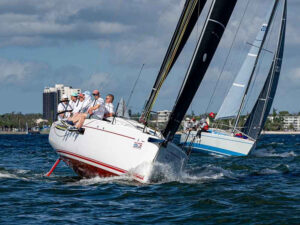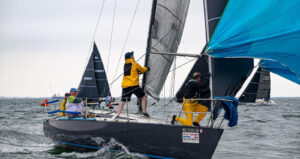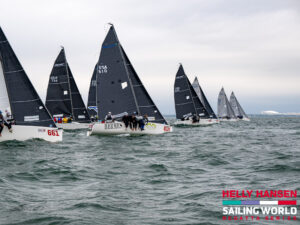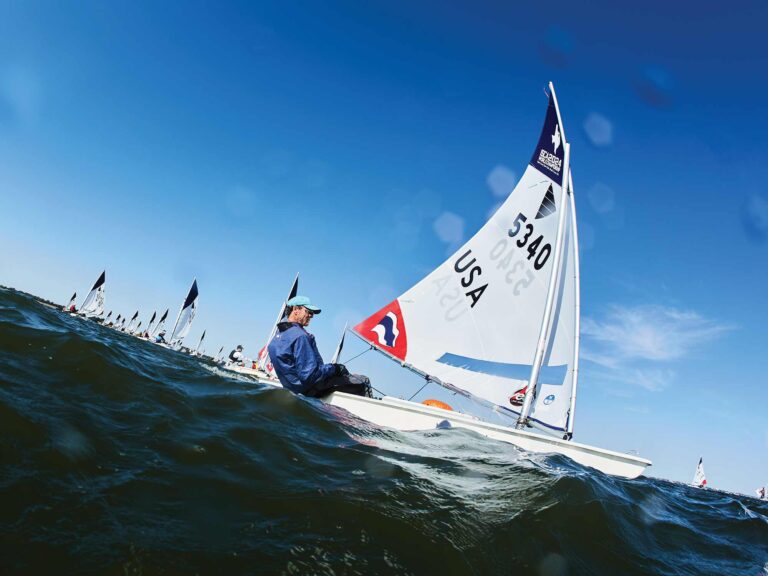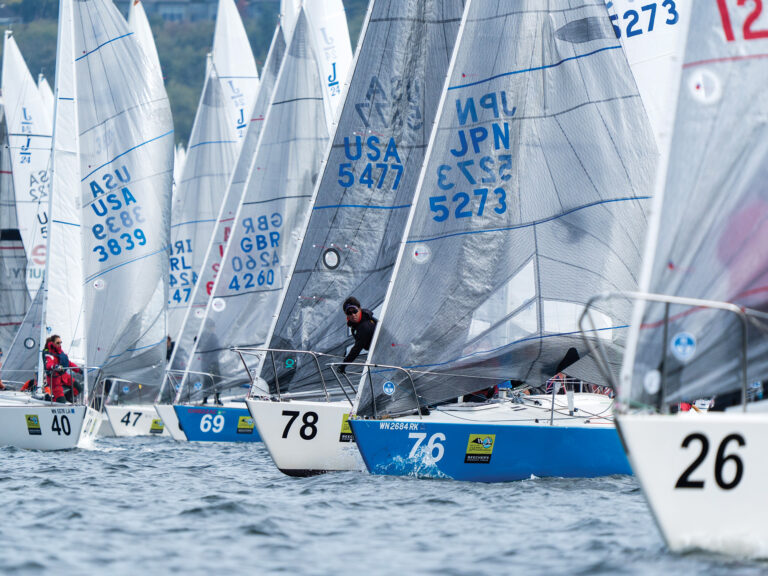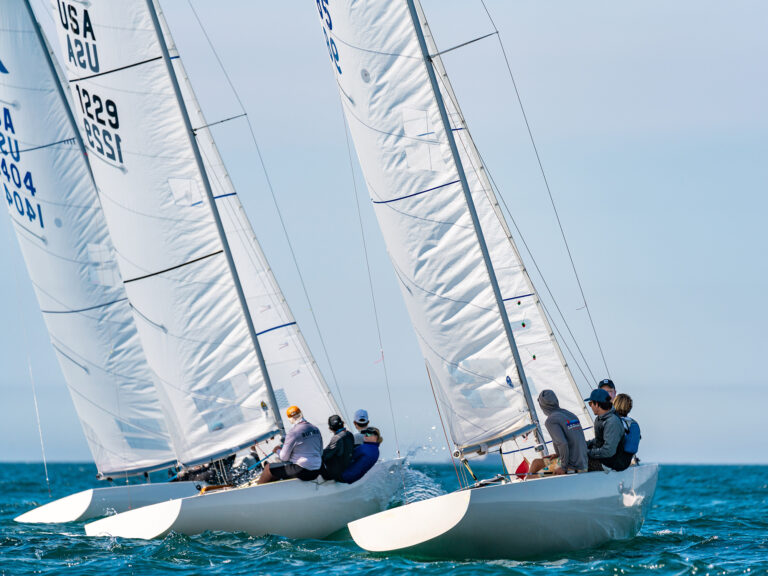
2006 Annapolis NOOD Wind Graphs
As winter draws to an end, the waters of the Chesapeake begin to warm and the jet stream starts to move north of the mid-Atlantic region, taking much of the synoptic variability with it. However, synoptic forcing is still the dominant cause of late April weather. May is the wettest month of the year, with mostly convective precipitation and the possibility of severe thunderstorms along frontal boundaries. May also sees a substantial increase in temperatures, to an average daily high of 75 degrees F up from 65 degrees in April. Some of the most important factors to consider when predicting late April winds in the Chesapeake include the strength of the pressure gradient, the potential for convection (thunderstorms), the complex coastline, and thermal effects such as a sea breeze. This time of year the pressure gradient is usually SW’ly around the NW periphery of the offshore Bermuda High; however, to determine the strength of the pressure gradient it is important to know the proximity and strength of any local depressions. Thunderstorms and convective precipitation events are common in early May, leading to gusty and erratic winds. However since the thunderstorms are often driven by synoptic events (cold fronts, warm fronts) rather then just thermal gradients, the resulting wind shifts are somewhat more easily predicted. In anything but a strong gradient flow, the complex shoreline near Annapolis can lead to numerous wind speed and directional changes throughout the day. The flow over coastal development (cities, roads, etc.) adds complexity, magnifying the gradient breeze, leaving wind holes, and influencing the development of sea breezes. On days with little or no pressure gradient, thermal effects that result from the temperature gradient between the land and water become an important influence on the wind direction. On days with stronger prevailing gradient winds from the SE veering SW the sea breeze will fill in earlier, whereas days with prevailing gradient winds from the W or NW there will be little or no sea breeze development. Enclosed are two graphs from last year’s race dates. Sandy Point is just north of the race course and is a Sailflow site while Thomas Point is a NDBC tower south of the race course. Notice that on both days the winds were driven by a prevailing SE gradient wind. These winds are somewhat common this time of year due to warm fronts that tend to drive in north of the Chesapeake Bay. These fronts can sometimes stall out leading to several days of SE flow, but also this opens the door for convection and afternoon storms and showers can be common. Both graphs show a pattern of a peak wind late morning, then the flow falls off as clouds build and weak localized breezes complicate the flow. Note the veer to more southerly winds on both sensors. Once again this year we appear to be in a pattern of frontal stalls and thus we may see a similar wind type for the races.The windroses below are used to show climatology for sites and the most common wind directions and strengths. These are from the month of April last year and you can see clearly that the strongest and most common wind direction was SE. This is primarily due to stalled and stationary northern frontal situations but also this is the prevailing direction for localized Bay breezes. Note that SW, NW, and NE winds tend to not be as common as SE flow but they tend to be stronger when they do occur because they generally are driven by larger scale synoptic events, and storms.With so many variables dictating the strength and direction of the breezes in the Chesapeake, real-time data and short-range forecasts are paramount to keep the edge on the competition. Sailflow is your source for real-time information with powerful free services as well as exclusive coastal sensors and proprietary model forecasts. This information is complimentary now and through the racing period at www.sailflow.com/annapolis. Sailing Weather Services is an excellent source for local and offshore racing forecasts. In cooperation with North Sails, Sailing Weather Service is offering free precision race forecasts for this event. Sign up at na.northsails.com/ew/ew_main.taf

